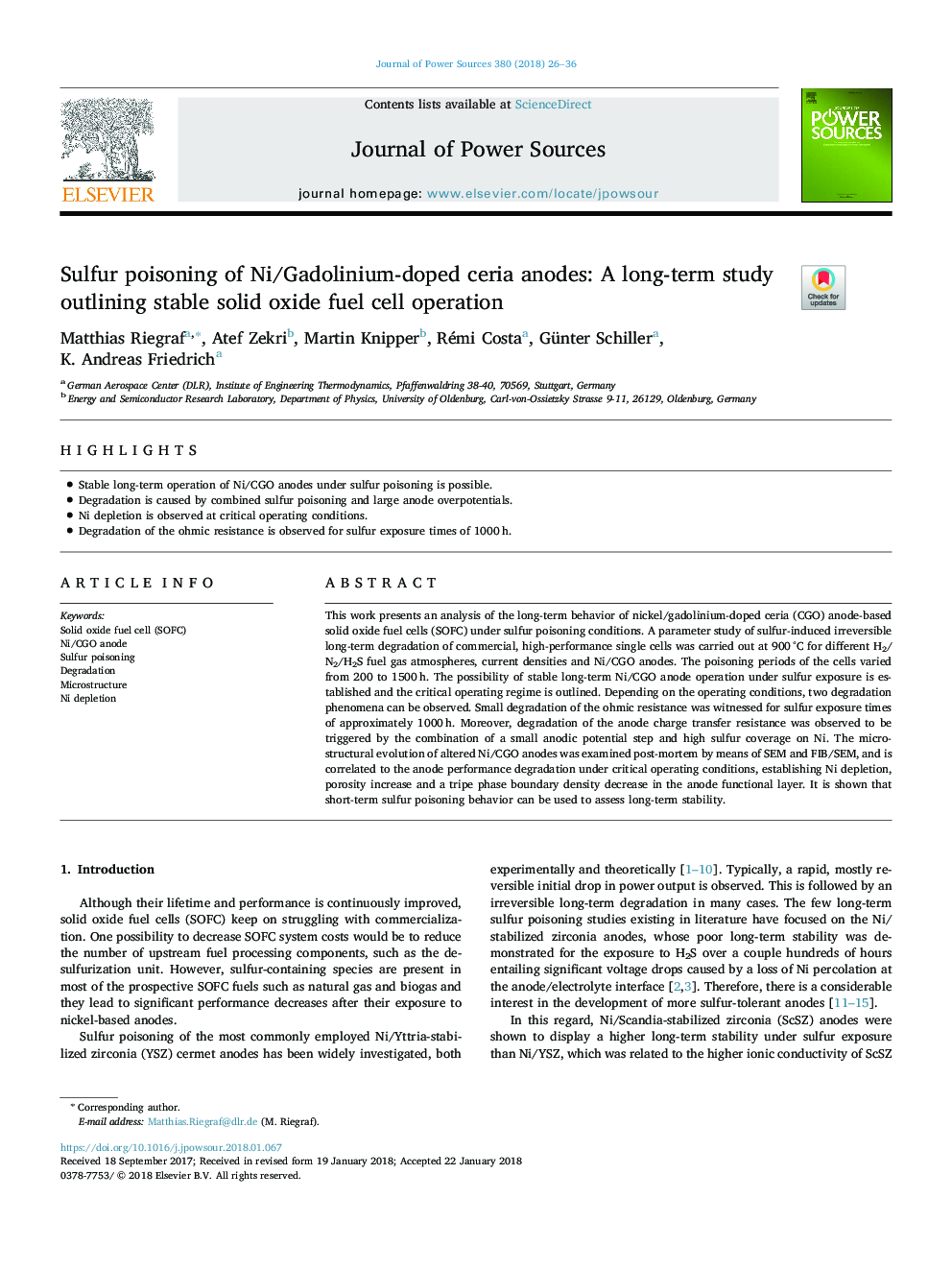| Article ID | Journal | Published Year | Pages | File Type |
|---|---|---|---|---|
| 7725673 | Journal of Power Sources | 2018 | 11 Pages |
Abstract
This work presents an analysis of the long-term behavior of nickel/gadolinium-doped ceria (CGO) anode-based solid oxide fuel cells (SOFC) under sulfur poisoning conditions. A parameter study of sulfur-induced irreversible long-term degradation of commercial, high-performance single cells was carried out at 900â¯Â°C for different H2/N2/H2S fuel gas atmospheres, current densities and Ni/CGO anodes. The poisoning periods of the cells varied from 200 to 1500â¯h. The possibility of stable long-term Ni/CGO anode operation under sulfur exposure is established and the critical operating regime is outlined. Depending on the operating conditions, two degradation phenomena can be observed. Small degradation of the ohmic resistance was witnessed for sulfur exposure times of approximately 1000â¯h. Moreover, degradation of the anode charge transfer resistance was observed to be triggered by the combination of a small anodic potential step and high sulfur coverage on Ni. The microstructural evolution of altered Ni/CGO anodes was examined post-mortem by means of SEM and FIB/SEM, and is correlated to the anode performance degradation under critical operating conditions, establishing Ni depletion, porosity increase and a tripe phase boundary density decrease in the anode functional layer. It is shown that short-term sulfur poisoning behavior can be used to assess long-term stability.
Related Topics
Physical Sciences and Engineering
Chemistry
Electrochemistry
Authors
Matthias Riegraf, Atef Zekri, Martin Knipper, Rémi Costa, Günter Schiller, K. Andreas Friedrich,
